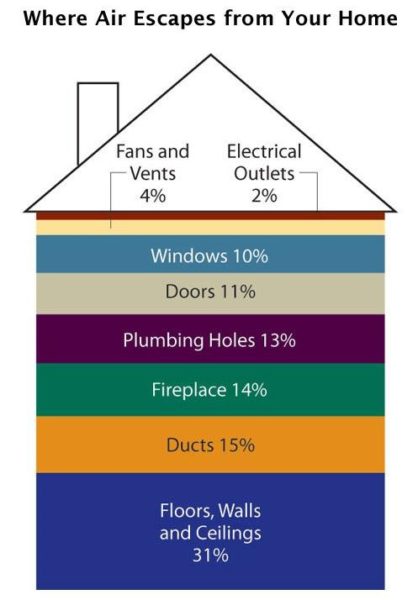Tips: How to weatherize your home – Yale Climate Connections
Energy Disrupter
A few simple yet effective weatherization strategies will boost your home’s comfort and efficiency, as well as help you save on energy bills.
Here’s how to safeguard your home and your wallet from the weather, a step that is growing all the more important as extreme weather grows more common. After all, a little bit of preventative maintenance generally costs less than making repairs or replacements after the fact.
1. Detect and seal leaks
It takes a lot of energy, whether in the form of air conditioning or heating, to keep a drafty home at the optimal temperature — especially during a major heat wave, wind event or winter storm.
By finding and sealing air leaks, however, you’ll be able to enjoy a more consistent, comfortable indoor environment. Bonus: Reducing drafts can cut a home’s energy use by as much as 10-20% per year, according to the U.S. Department of Energy. Plus, homeowners may find their heating and cooling systems last longer when they’re not being overworked.
One simple way to hunt for indoor leaks is to slowly move an incense stick along floors, windows, doors, vents, and walls, and look for places where the smoke changes direction rather than rising straight up. Jot down the trouble spots, then address them in turn with either weather-stripping or caulking, depending on the location.
Other spots to check include outlets and switches, which are easy to seal with inexpensive foam gaskets from your hardware store, and air ducts, which you can patch with tape or mastic.
Here’s more information on how to air seal your home.
2. Add insulation
As many as nine out of 10 homes in the U.S. are under-insulated, making them more vulnerable to temperature change and other issues like noise and humidity. But adding insulation, together with sealing air leaks, can help keep your home warmer in winter and cooler in summer — while saving up to 10% on your annual energy bills, according to Energy Star.
This process includes replacing or installing the insulation in the walls and floors and ceilings of attics, basements and crawl spaces. Call in a pro or install yourself* by fitting batts firmly into place between studs, cutting to fit around plumbing and electrical boxes. (*If you’re considering the DIY route, please note that health risks can arise with improper installations.)
There are other insulation measures you can take, too. For example, if your winters are cold, you can consider insulating hot water pipes or insulating your hot water tank with a simple blanket or wrap.
You can also insulate windows with window inserts — clear, lightweight insulators that pop into the frame — or try shrink-fit window insulators, which seal on to the existing window with a hairdryer. Window inserts can help avert heat loss, which can add up considering that 25-35% of a typical home’s heat is lost through its windows.
3. Defend against storms and flooding
If you live in an area increasingly vulnerable to major storms and other natural disasters, it’s important first to be informed about potential local threats and develop an emergency plan.
But in addition to preparing for an outright emergency, it may also be prudent to guard your home against the damaging effects of major windstorms and flooding.
For example, if high-wind storms are growing more prevalent, then a first item of business should be to install or upgrade storm doors and windows. You can also reinforce garage doors, fortify your roof and fencing, and secure outdoor objects like gutters, among other protective measures.
If flooding is becoming more common in your area, then start with low-cost ways to protect your home from flooding like keeping gutters and downspouts clear. Then proceed to more advanced action like sealing any cracks in the foundation and installing sump pumps, flood vents, or rain gardens.
The increasing value of home weatherization
Preparing your home to meet the mounting challenges of climate change pays off in a number of ways, from enhancing comfort and safety to reducing energy use and costs.
What’s more, the investments you make today could secure your home, helping you maintain a safe haven in a world of increasingly extreme weather.
Original Source: https://yaleclimateconnections.org/2021/06/tips-how-to-weatherize-your-home/



















